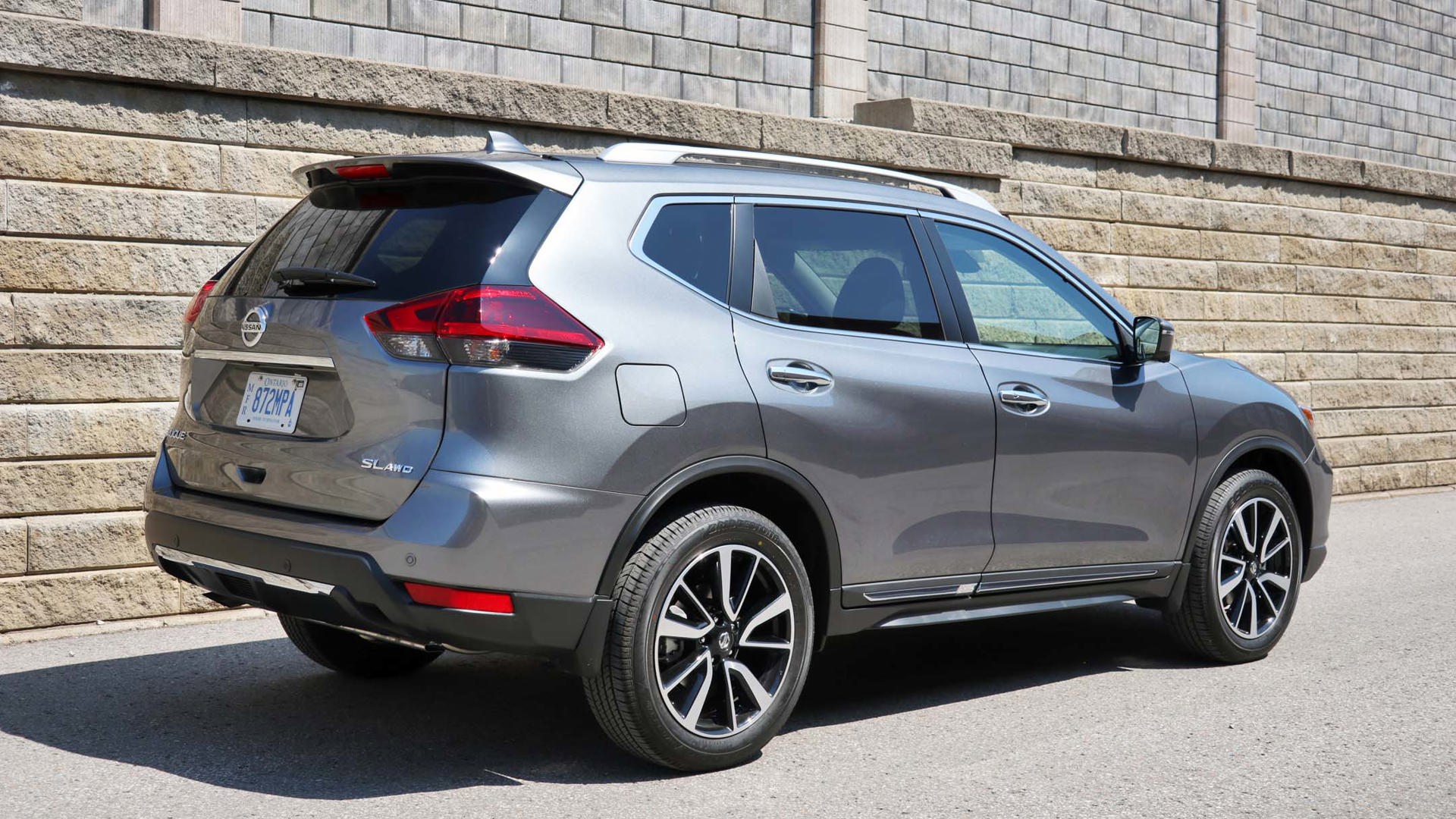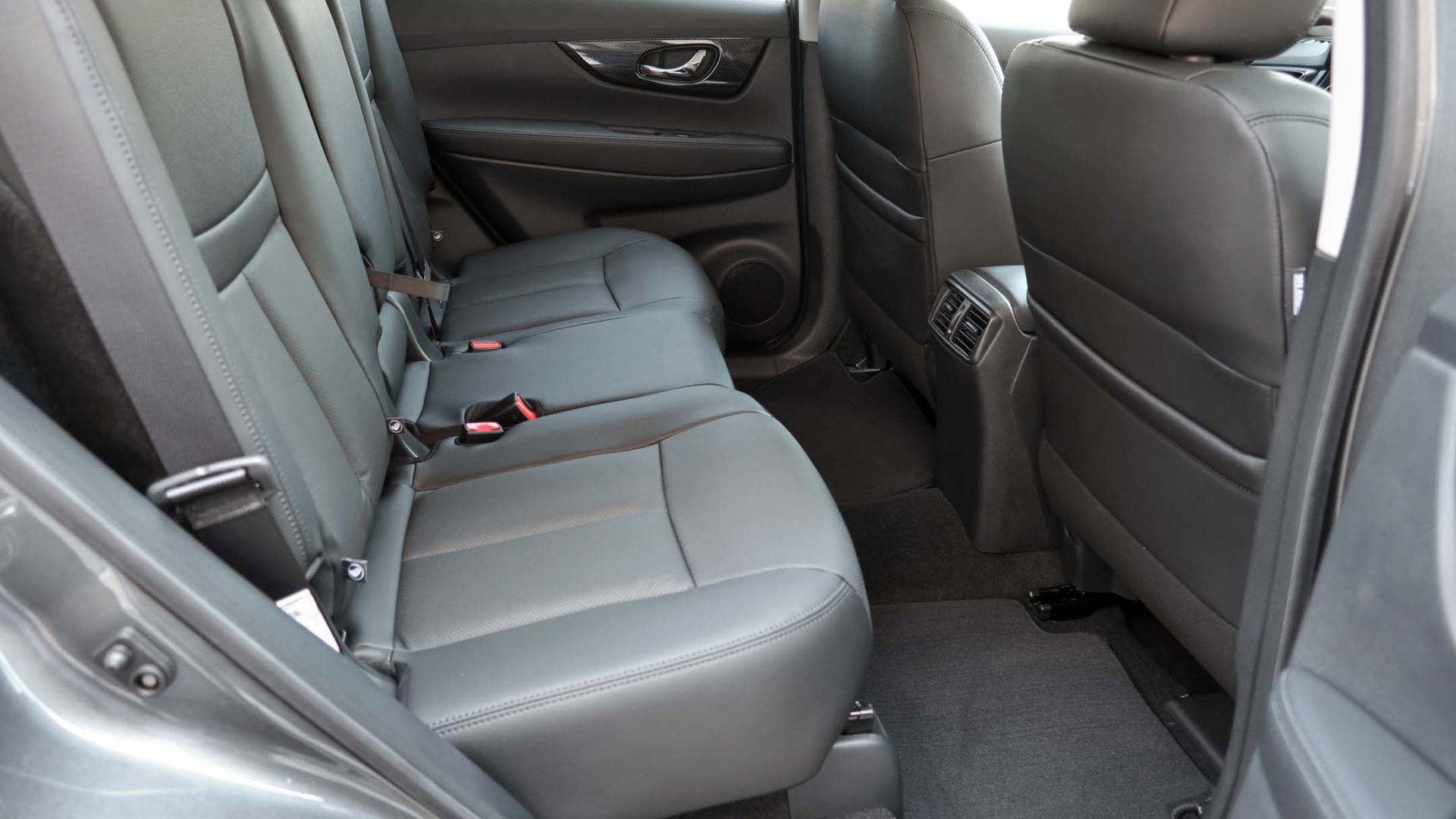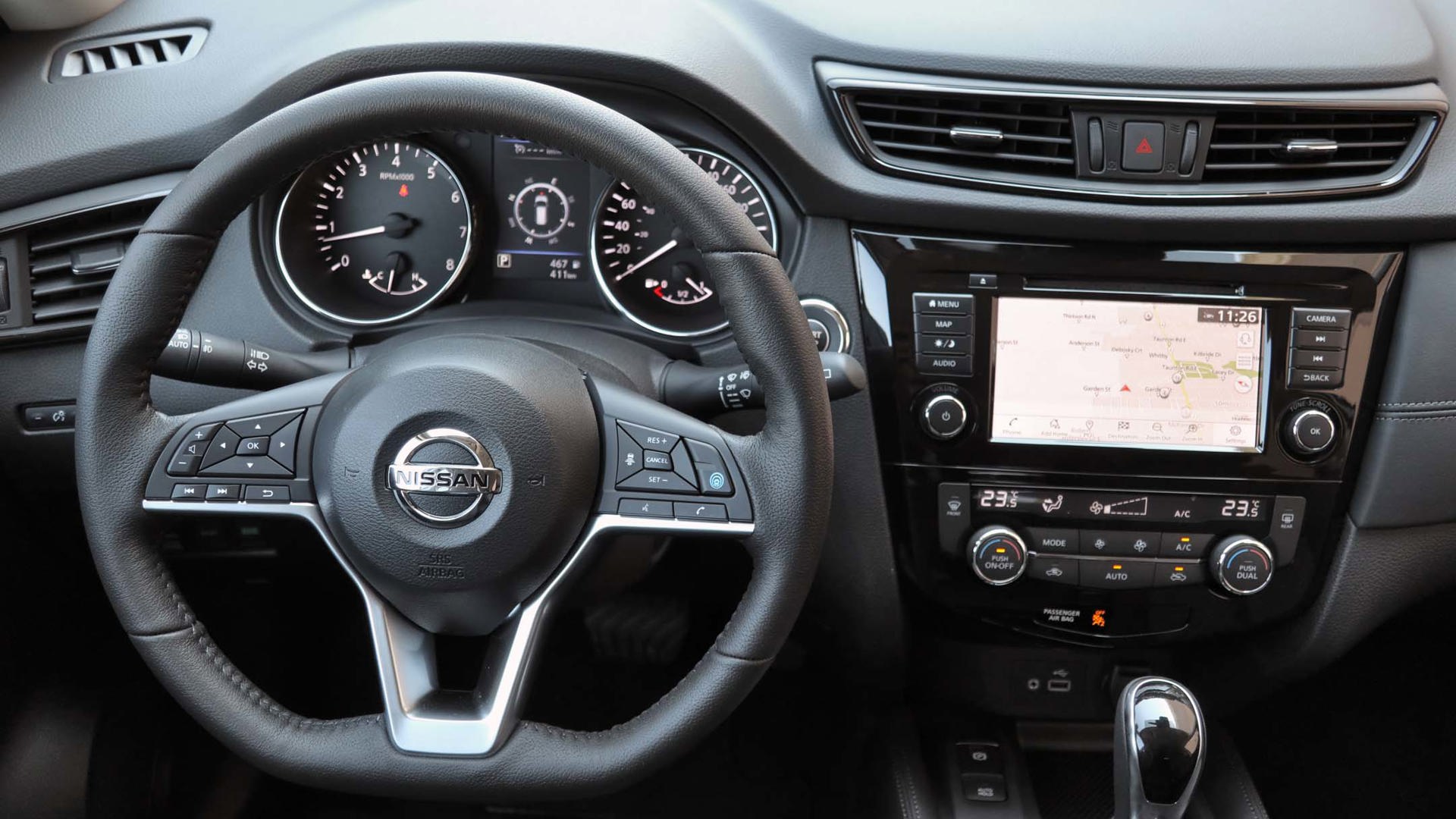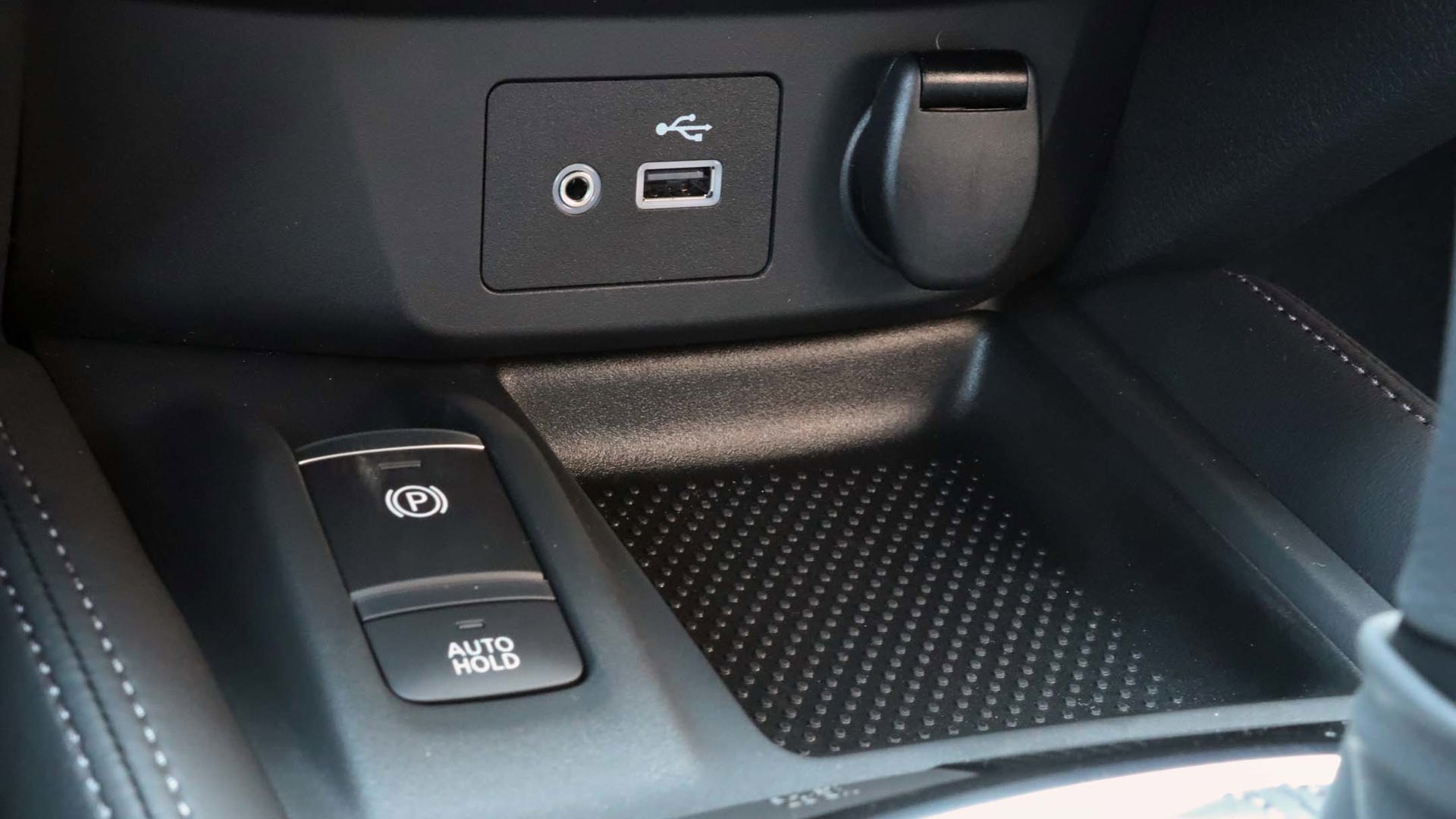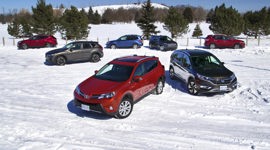 AutoTrader SCORE
AutoTrader SCORE
-
STYLING8/10
-
Safety8/10
-
PRACTICALITY8/10
-
USER-FRIENDLINESS8/10
-
FEATURES8/10
-
POWER6/10
-
COMFORT8/10
-
DRIVING FEEL6/10
-
FUEL ECONOMY8/10
-
VALUE7/10
Every vehicle purchase is about setting priorities: whether you’re more concerned about price, or performance, or practicality. The 2019 Nissan Rogue gives you two of them, with intelligent pricing and a well-thought-out cargo compartment, which you trade off against a rather ordinary driving experience.
For 2019, the Rogue has some updates to its trims and features across the three trim levels of S, SV, and SL Platinum. There’s a new Special Edition Package to dress up the base S trim level; a rear door alert on all trims; and new optional or standard items, depending on the trim level, including emergency rear braking, adaptive cruise control, and ProPilot Assist.
Styling: 8/10
Some manufacturers are going much edgier with their compact SUV designs, but I like the Rogue’s smoothed-out looks. I drove the top-level SL Platinum, which gives you 19-inch wheels and LED headlamps (the lower S and SV trim levels give you 17- or 18-inch wheels, and halogen lights). And getting into the Rogue is easy, with a low step-in and a low cargo lift-over, with the ease of a handsfree power liftgate on my tester.
Safety: 8/10
The Rogue is rated four stars out of five by NHTSA, and has the top “Good” crash scores from IIHS. All trim levels include emergency front braking, although the version on the base S doesn’t include pedestrian detection. The SV and SL add lane-keeping and blind spot monitoring.
All trim levels include a rear-seat warning, intended to alert to the possibility of a child or pet that’s been left in the back seat. Opening a rear door before you take off sets the warning. If you then park the Rogue, but don’t open the rear door, you’ll first get a warning in the instrument cluster. If you then get out and close your front door, but don’t open a rear one, you’ll get a couple of horn chirps to remind you to check. Having neither children nor pets, I hit the “disable alert” notice in the instrument cluster after opening the rear doors to take photos, but each time I restarted the vehicle, the system rearmed.
ProPilot Assist is standard on the SL, and optional on the SV. It’s essentially a combination of all those active safety technologies, which you turn on simultaneously with a button on the steering wheel. Once it’s on, the Rogue can effectively take itself down the highway, by keeping its distance from traffic in front and staying in its lane. Nissan stresses that it’s only an assist, rather than autonomous driving. If it detects that you’re not holding the wheel – and if you have a light touch when highway driving, as I do, it often thinks your hands are off even though they’re on it – it’ll set off a warning chime. Ignore that, and it’ll tap the brakes to get your attention; ignore that, and you get a whooping siren. These engineers are serious.
It’s been my experience with ProPilot that it’s better on some vehicles than on others. It was very smooth on the all-new Altima I recently drove, but on the Rogue, not so much. Rather than stay straight between the lines, it tended to bounce between them, making far more steering corrections than I’d have needed on my own, and giving an annoyingly squirmy feel to the steering wheel. At one point, it got confused by lines in the asphalt where tar had been laid to fill cracks, and made a violent jab to get over to the lane’s left-side marker. My Pilot wasn’t always as Pro as it could have been, it seems.
Practicality: 8/10
The Rogue’s roomy rear seats fold down to give you extra cargo space, but it’s the cargo compartment itself that’s pretty cool. All trim levels come with a configurable panel, called the Divide-N-Hide Cargo System. The cargo floor is actually two panels, which can be removed, placed in upper or lower positions, or set upright. With the front panel up, you have a well to hold grocery bags so they don’t travel around; with the panel in the upper slots, you can hide valuables under it. While I didn’t count them all, Nissan says there are 18 possible variations for the cargo compartment.
Good cargo management is always a plus for me, especially since I’m short and don’t appreciate leaning over a dirty bumper to reach items that slid out of reach. The handsfree liftgate is a bonus, too. And if you need to carry extra-long items, the front passenger seatback folds backwards to give you a pass-through from liftgate to dash.
User Friendliness: 8/10
I’m very fond of the Rogue’s simplicity when it comes to its controls. The climate system – dual-zone automatic on the SL Platinum – uses dials and buttons, including for the heated seats and my tester’s heated steering wheel. The centre screen is touch-activated but also has hard buttons to quickly get you to some of the functions, including my tester’s navigation system, and the 360-degree camera.
There’s not quite as much small-item storage as in some other sport-utes, but you get a small open cubby in the centre stack, one where you can park a phone behind the cupholders, and a covered box in the centre console.
Features: 8/10
The Rogue’s simply styled cabin tends to underscore the fact that the SL Platinum is actually filled with a fair amount of stuff. In addition to the aforementioned ProPilot Assist and the various tools it controls, on the technology side you also get Apple CarPlay and Android Auto, navigation, a remote starter with climate control, Around View Monitor, and Bose premium audio.
On the comfort side, the SL Platinum gives you heated leather seats, heated steering wheel, driver’s side memory, power passenger seat, and dual-zone automatic climate control, along with that handsfree power liftgate. Available, but not added to my tester, is a Platinum Reserve Interior Package, which adds tan leather seats with quilted leather inserts for an extra $500.
Power: 6/10
All Rogue models are powered by a 2.5L four-cylinder that makes 170 horsepower and 175 lb-ft of torque, mated to an automatic, continuously variable transmission (CVT). It’s enough to move the Rogue around, but it’s a relatively heavy little thing, and so acceleration is tepid.
The S and SV come in either front- or all-wheel drive, while the SL Platinum is strictly all-wheel. The AWD is a variable system that primarily powers the front wheels, but can send torque to the rear ones as required. There’s an AWD Lock button, which gives you 50/50 power distribution, but it’s meant only for low speeds, such as when crawling out of a very snowy or muddy driveway, and it disengages once you start moving at a higher speed.
Comfort: 8/10
For its size, the Rogue is extremely roomy inside. Nissan calls its seats “zero gravity” for their support and cushiness, and it’s pretty accurate: these are nice chairs. They have just enough bolstering, staying comfortable on a couple of longer highway drives.
The rear seats are a bit flatter, but not by much, and those in the rear seats shouldn’t have many complaints. Those rear chairs also slide fore and aft to provide more legroom or to maximize cargo space, as needed, and they recline.
Driving Feel: 6/10
The Rogue shines in many areas, but its driving prowess falls short. It’s not meant to be sports material, but I’d like livelier handling, and more communicative steering feel so I know what’s under the wheels. It gets the job done, but it’s a dull driver in a segment where companies like Mazda, Honda, and Hyundai send out more interesting models.
The engine and transmission are loud under acceleration, and the CVT gets rubbery on when you hit the throttle hard, although the cabin quiets down once you get up to speed. The ride is fine, though, and only the nastiest bumps make their way into the cabin. From behind the wheel, the Rogue is an older design that’s showing its age.
Fuel Economy: 8/10
The Rogue AWD is rated at 9.6 L/100 in the city, 7.5 on the highway, and with a combined average of 8.7 L/100 km. In a week of driving, I came pretty close at 9.1 L/100 km. That number’s higher than most of its all-wheel competitors, but not by much: the Toyota RAV4 is rated at 8.3 L/100 km, while the Mazda CX-5 is 8.8, and Honda’s CR-V is 8.0. A Rogue Hybrid is available in the US, with a 2.0-litre engine and electric motor, but it’s not sold in Canada.
Value: 7/10
In front-wheel drive, the Rogue starts at $26,898 for the S, and $29,198 for the SV. You add $2,200 to either one for the all-wheel system. Meanwhile, my SL Platinum tester was $37,498, plus $135 for its coat of metallic paint. That’s not bad if you add up all the features that are stuffed into that top-level trim, but from the driver’s seat, the performance and the interior’s plain appearance didn’t seem like something that was butting up against $38,000. I’d be more inclined to look at the SV AWD. It lacks the SL’s luxury, but you still get a lot for its $31,398 tag.
Conclusion
So we’re back to the original premise: that no vehicle has it all, and you have to pick what’s important. If you like your vehicle to have some driving personality, the Rogue is going to disappoint. On the other hand, it’s almost ridiculously roomy for its size, the seats are comfortable, and the cargo compartment is actually meant to carry cargo. If practicality and price are the two out of three on your list, then take the Rogue for a test drive.
| Engine Displacement | 2.5L |
|---|---|
| Engine Cylinders | I4 |
| Peak Horsepower | 170 hp @ 6,000 rpm |
| Peak Torque | 175 lb-ft @ 4,400 rpm |
| Fuel Economy | 9.6/7.5/8.7 L/100 cty/hwy/cmb |
| Cargo Space | 1,112 /1,982 L seats down |
| Model Tested | 2019 Nissan Rogue SL Platinum AWD |
| Base Price | $37,498 |
| A/C Tax | $100 |
| Destination Fee | $1,815 |
| Price as Tested | $39,548 |
|
Optional Equipment
$135 – Gunmetal Grey metallic paint $135
|
|


